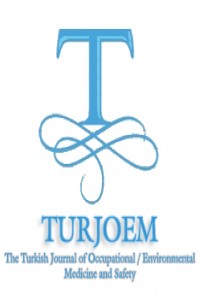Abstract
The liver has a very important role in the
synthesis and elimination of asymmetrical dimethylarginine (ADMA), which is a
methyllated derivative of arginine. The relation of ADMA, which is a nitric
oxide synthase inhibitor, with liver disease is documented; however if it is
directly related with liver injury is unkown as of yet.
Our aim in this study is to determine if ADMA
has a direct effect on liver injury, if so; to evaluate if ascorbic acid (AA)
reduces the extent of damage.
The study consisted of three groups comprised
of 10 rats each. 1) control group, 2) ADMA (2 mg/kg/day) recieving group, 3)
ADMA+AA (50 mg/kg/day) recieving group. The rats were sacrificed on the 10th
day, and AST, ALT, GGT and ALP activities were measured. The histomorphologic
evaluation of the liver was done by the Ishak score system.
When compared to the control group, ALT and ALP
activities were found to be higher in only the ADMA group (p=0.006 and p=0.041
respectively). With AA addition, parameters were found to be lower, however
statistical significance was not achieved (p>0.05). when the control group
was compared with the ADMA group; interface hepatitis, confluent necrosis,
focal necrosis, histologic activity index, severity of hepatitis ve portal
inflammation were all found to be higher in the ADMA group. With the addition
of ADMA, although not significant, said histopathologic parameters improved (p>0.05).
These results suggest that the increase in
plasma ADMA levels had a detrimental effect on liver injury. The lack of
significant improvement with AA addition suggested that other factors beside
prooxidant factors had an effect on injury.
Keywords
THE RESTORATIVE EFFECT OF ASCORBIC ACID ON LIVER INJURY INDUCED BY ASYMMETRIC DIMETHYLARGININE
References
- Department of Medical Biochemistry, Faculty of Medicine, Ondokuz Mayıs University, Samsun, Turkey
- Department of Nutrition and Dietetics, Samsun Health School, Ondokuz Mayıs University, Samsun, Turkey
- Department of Pathology, Faculty of Medicine, Gaziosmanpaşa University, Tokat, Turkey
- Samsun Public Health Laboratory, Ministry of Health of Turkey, Samsun, Turkey
- Department of Statistics, Faculty of Science and Arts, Ondokuz Mayıs University, Samsun, Turkey
- Department of Medical Biochemistry, Faculty of Medicine, Hacettepe University, Ankara, Turkey
- Department of Medical Pharmacology, Faculty of Medicine, Ondokuz Mayıs University, Samsun, Turkey
- Department of Gastroenterology, Faculty of Medicine, Ondokuz Mayıs University, Samsun, Turkey
Abstract
References
- Department of Medical Biochemistry, Faculty of Medicine, Ondokuz Mayıs University, Samsun, Turkey
- Department of Nutrition and Dietetics, Samsun Health School, Ondokuz Mayıs University, Samsun, Turkey
- Department of Pathology, Faculty of Medicine, Gaziosmanpaşa University, Tokat, Turkey
- Samsun Public Health Laboratory, Ministry of Health of Turkey, Samsun, Turkey
- Department of Statistics, Faculty of Science and Arts, Ondokuz Mayıs University, Samsun, Turkey
- Department of Medical Biochemistry, Faculty of Medicine, Hacettepe University, Ankara, Turkey
- Department of Medical Pharmacology, Faculty of Medicine, Ondokuz Mayıs University, Samsun, Turkey
- Department of Gastroenterology, Faculty of Medicine, Ondokuz Mayıs University, Samsun, Turkey
Details
| Journal Section | Articles |
|---|---|
| Authors | |
| Publication Date | February 16, 2017 |
| Published in Issue | Year 2017 Volume: Volume 2 Issue: İssue 1 (1) - 2.İnternational Congress Of Forensic Toxicology |


